We’re excited to announce the release of Camunda Cloud 1.0.
Camunda Cloud 1.0 is a significant milestone for the product as well as for Camunda. Read in more detail what Daniel Meyer, CTO of Camunda, has to say about this release. We have run an extensive beta program for Camunda Cloud including Zeebe 0.26 as well as an early-access program. We’ve improved the product over this time with input from customers and are now ready to take the next step and make Camunda Cloud generally available.
If you’re interested in trying out Camunda Cloud – Sign up here for a free 30-day trial.
The remainder of this blog post will focus on the highlights of Camunda Cloud 1.0.
The release notes can be found on GitHub.
- Camunda Cloud
- Design Processes with Camunda Modeler or Cloud Modeler
- Automate Processes with Zeebe, Operate, Tasklist and Cloud Console
- Public API
- Update to Camunda Cloud 1.0
- Try Camunda Cloud
Camunda Cloud
Camunda Cloud 1.0 is available as a managed service (SaaS) as well as a self-managed offering. This release of Camunda Cloud includes:
- all automation components including Zeebe, Operate and Tasklist
- our desktop modeling tool Camunda Modeler (now compatible with Camunda Cloud)
- the Cloud Console for our managed service
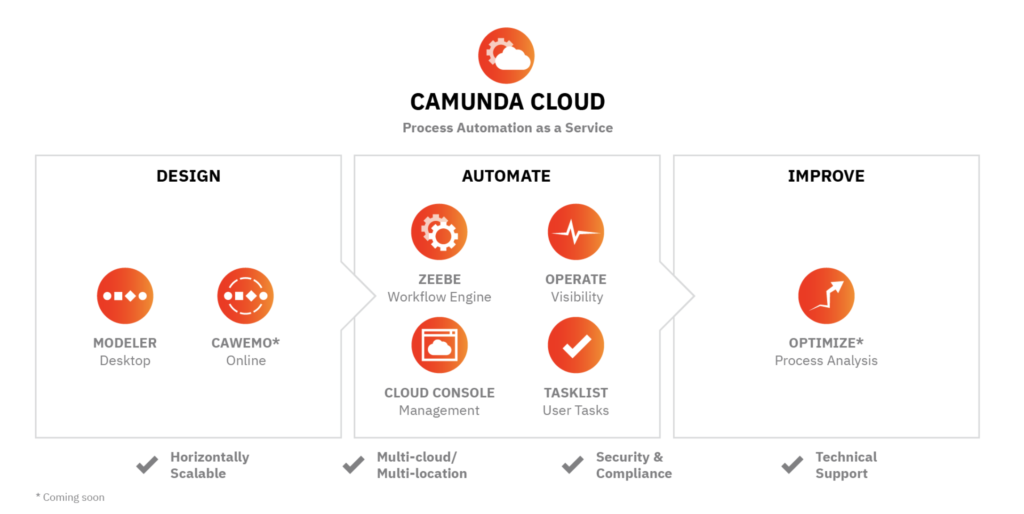
With Camunda Cloud 1.0 we are adding new functionality and components that are key for process automation projects such as Human Workflow Support. What is even more important is that we make it updatable in a backwards-compatible manner (including defining a Public API and a clear update path), have well-defined documentation, product reliability and appropriate SLAs moving forward.
Design Processes with Camunda Modeler or Cloud Modeler
Camunda Modeler 4.8
With this release you can now use the Camunda Modeler to design and make your BPMN Processes executable. This means moving forward you will need only one single Desktop Modeler, no matter if you are automating processes on Camunda Platform or Camunda Cloud.
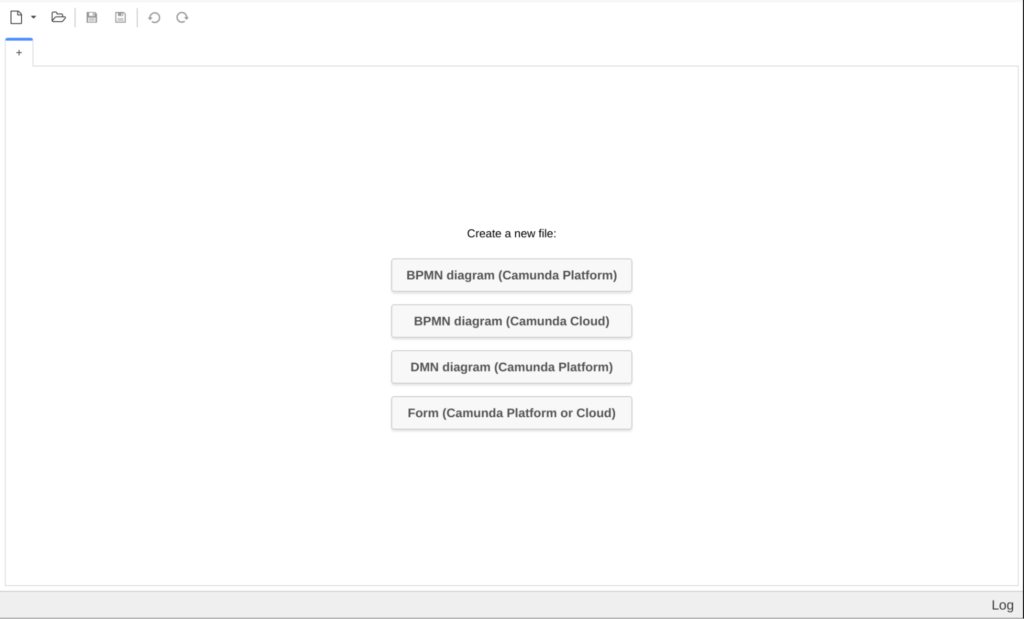
We have built a dedicated Guide for creating your first Process in Camunda Modeler.
Besides modeling and making BPMN Processes executable, the Camunda Modeler also allows you to deploy the designed processes directly to Camunda Cloud, both self-managed or to our SaaS version.
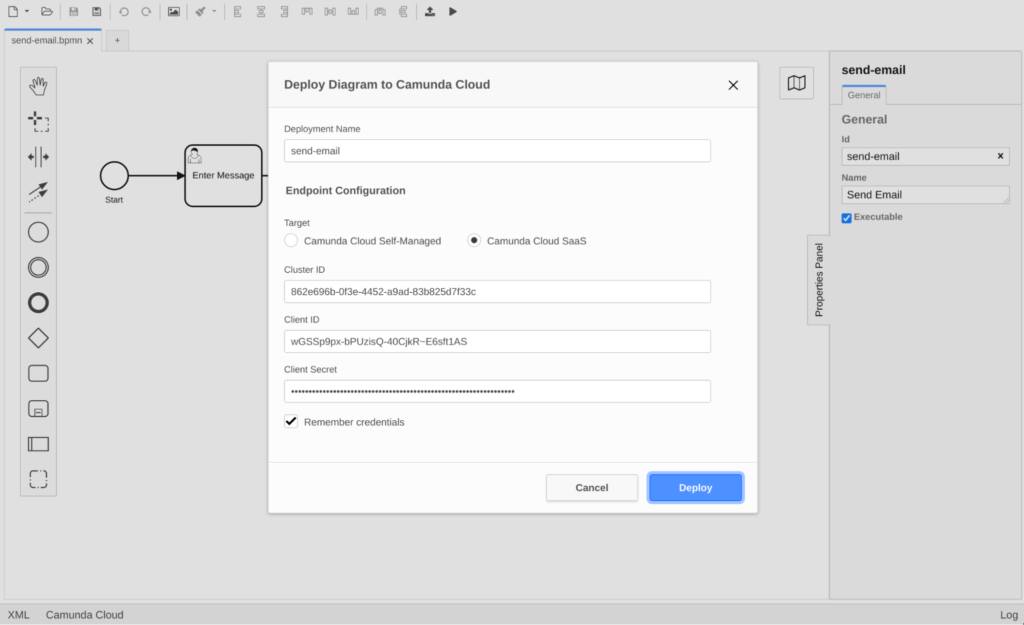
Starting with Camunda Cloud 1.0, you will no longer need to have the Zeebe Modeler installed on your machine. Simply download the Camunda Modeler 4.8 now.
Cloud Modeler
Besides making our desktop modeling tool compatible with Camunda Cloud, we also introduced a way of modeling and deploying BPMN Processes directly within the Camunda Cloud Console in our new Cloud Modeler:
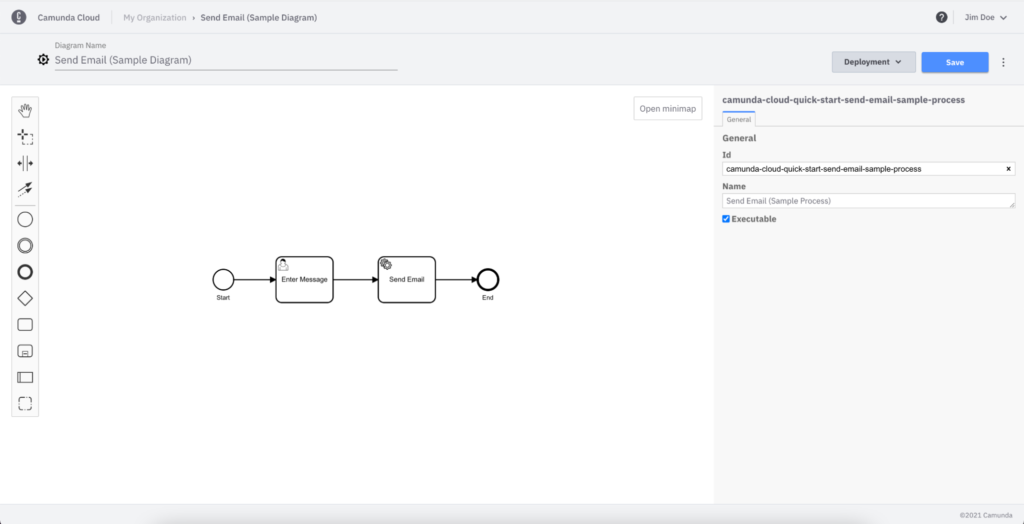
Both Modelers allow you to create User Task Forms, we will go in more detail in the Tasklist and User Task section.
Automate Processes with Zeebe, Operate, Tasklist and Cloud Console
Zeebe
Camunda Cloud is powered by Zeebe, a new class of BPMN workflow engine that delivers true horizontal scalability and enables high-performance use cases that were once beyond the realm of workflow automation.
If you are interested in Zeebe’s architecture, check out our documentation.
You can find Zeebe on GitHub, too.
Horizontal Scalability
In order to give you an idea about Zeebe’s horizontal scalability, we have put together some very basic performance details here. To generate these numbers we used the benchmark which is published under https://github.com/camunda-cloud/zeebe/tree/develop/benchmarks. The benchmark runs a Zeebe cluster on Kubernetes, and constantly starts new instances with a given rate, and also completes the service task jobs to finish the instances. This allows you to easily reproduce the benchmark in your own Kubernetes environment. Per default the process used for this benchmark contains a single service task and simulates a process variables payload of around 45kb data.
The following data shows a Zeebe setup with the default settings, no optimizations were made. We compare the performance of setups with 1, 3 and 9 partitions and a replication factor of 3, and with that the scalability of the Zeebe broker.
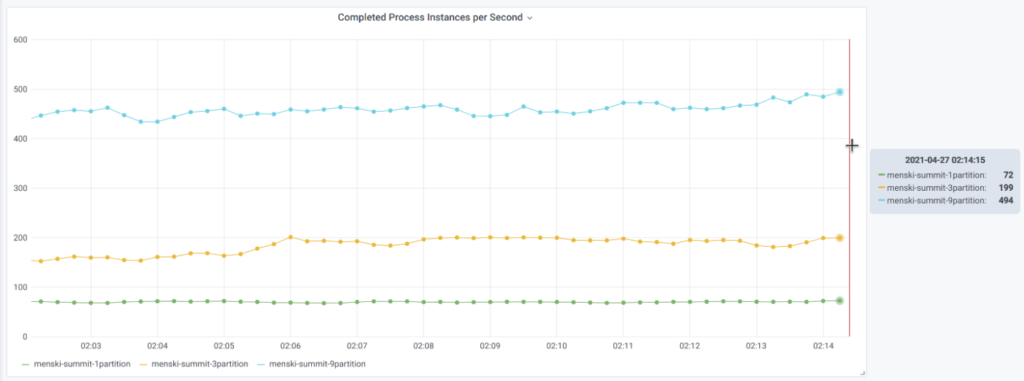
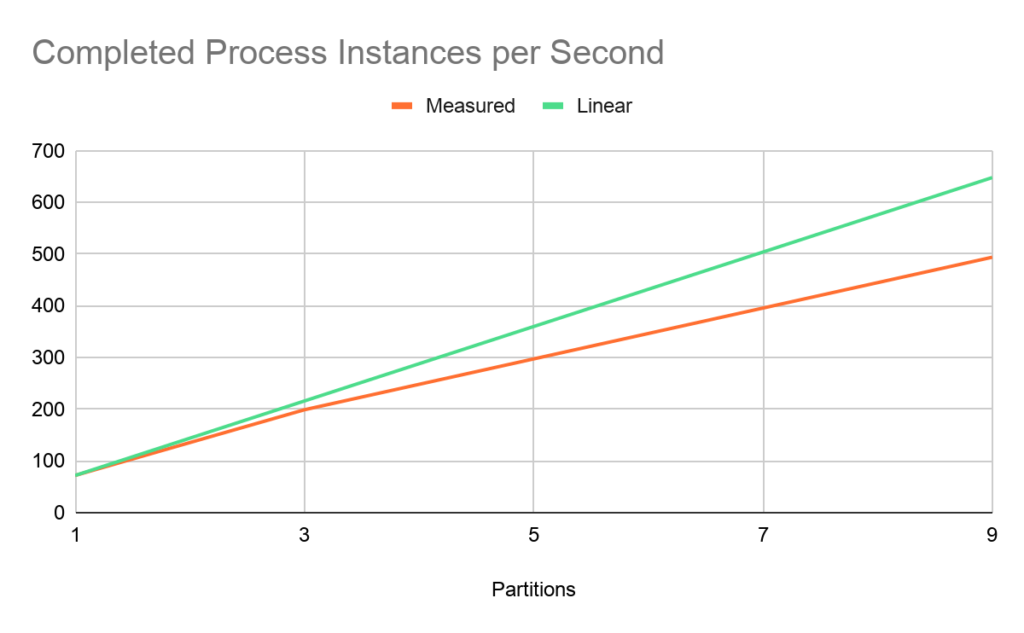
As shown in the graphs Zeebe scales out of the box nearly linearly. This allows users to setup a cluster with the right number of partitions to support their expected workload. Please note that further benchmarking and optimization of the configuration can increase the scalability of Zeebe.
Updates from Zeebe 0.26 to 1.0
If you were using Zeebe already before 1.0 it is important to realize the major improvements that come with 1.0:
Improved Performance and Memory Management
We have made significant improvements to Zeebe’s performance and memory management by migrating RocksDB to use a one column family.
We tested performance during our normal benchmark, which starts a simple process with one task and around 40kb payload. We use three brokers with three partitions and a replication factor of three. We observed that we were able to:
- Reduce memory consumption by a factor of 4
- Increase throughput by roughly 15%
- Improve latency by 50%


Feel free to read about all the details here.
Extend and improve the event sourcing principles in the workflow engine
With Zeebe 1.0 we made major improvements to how our workflow engine uses event sourcing principles. Event sourcing allows us to build a scalable and fail-safe distributed system. Earlier releases of Zeebe suffered in some rare cases such that a change to the workflow engine logic could lead to situations where the update is not backwards compatible. As we aim for full backwards compatibility starting with 1.0 we resolved this issue by refactoring and improving our separation of command and event processing in our stream processors. If you want to read more about the technical details, there is an extensive write-up about the changes available.
Renaming Workflow to Process and API changes
Before we release Camunda Cloud 1.0.0, we had to ensure that our APIs are at a level where we can support them for an extended period. One area of focus for this was naming, and we made the decision to align with the general terminology used by Camunda. This change refers to the renaming of “Workflow” to “Process,” we adjusted our APIs and UI to follow the terminology guidelines of Camunda, where we prefer “Process” or “Business Process.” The impact of these changes affects the APIs provided by Zeebe and UIs of Operate and Tasklist. To learn more about the renaming in specific components, please follow the update guide for 0.26 to 1.0 in our documentation.
Cloud Console
Cloud Console allows you to instantly create and manage all your workflow engine clusters at the push of a button. It also allows you to monitor cluster health and manage organizational settings.
Cloud Console is currently not available for the self-managed version, but it is part of our roadmap to offer similar functionality for Camunda Cloud Self-Managed.
With Camunda Cloud 1.0 we are adding additional functionality to Cloud console:
Alerts
One of the most prominent additions is the Alerts functionality. This allows you to create alerts and to receive notifications automatically via E-Mail or Webhook when incidents occur. Once you receive an alert, you can easily perform root-cause analysis and resolve the underlying issue with the help of Operate.
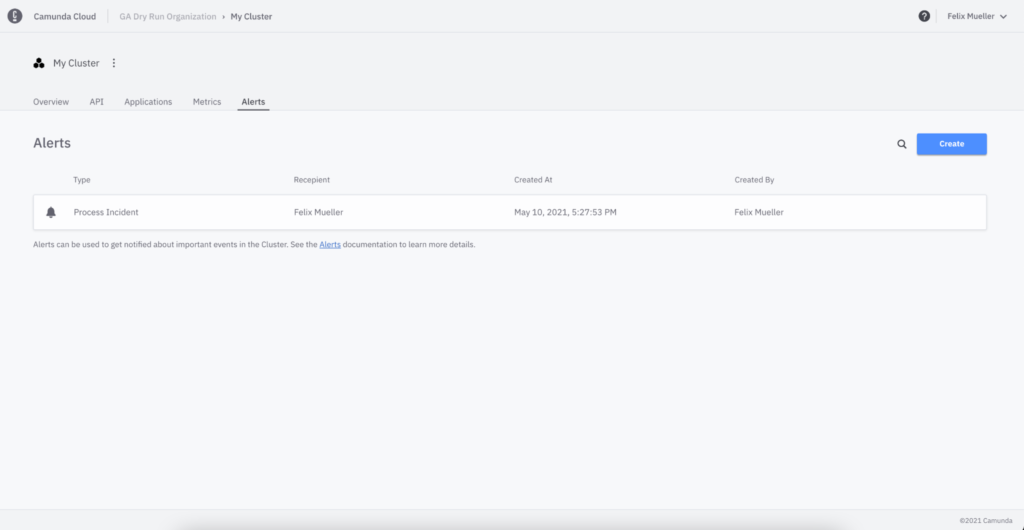
Metrics
We are also introducing metrics which make it easy to monitor cloud resource utilization of your cluster(s):
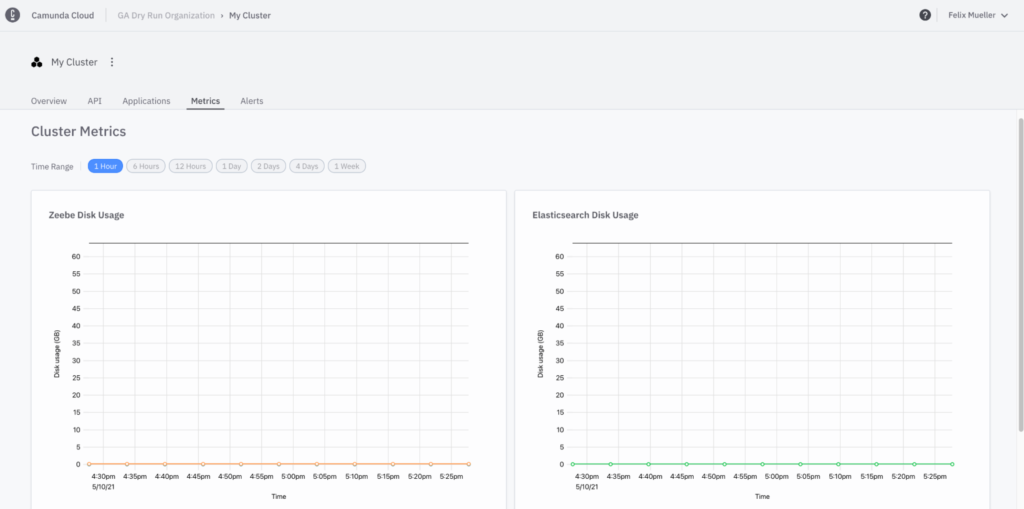
Operate
Camunda Operate provides transparency and real time visibility to discover, analyze and solve issues with processes running in Camunda Cloud.
Operate provides a dashboard view, which allows you to quickly identify all running instances and incidents within your processes such that you can understand where instances are stuck.
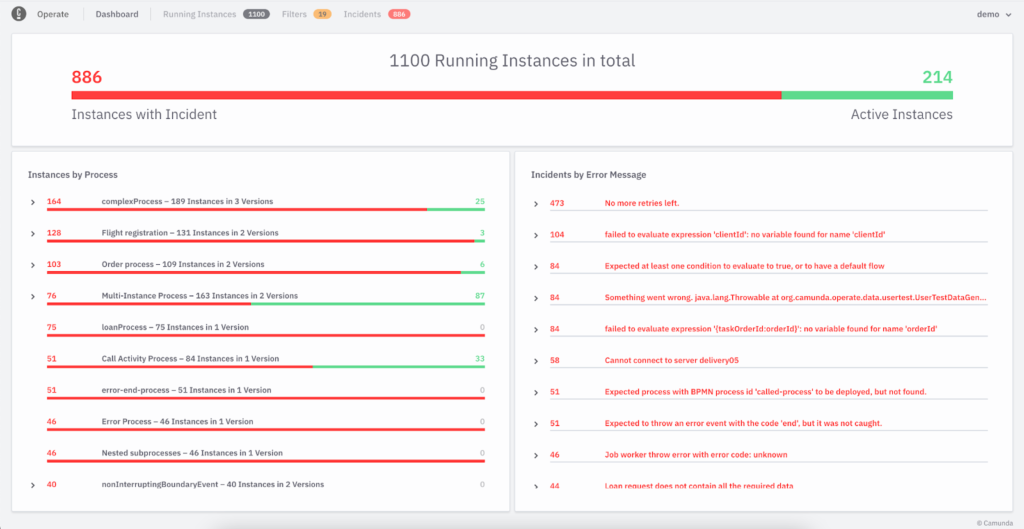
Operate also allows you to to drill deeper to get an overview about a specific process and its running and completed instances. You can quickly identify where instances are stuck by looking at the red incident markers:
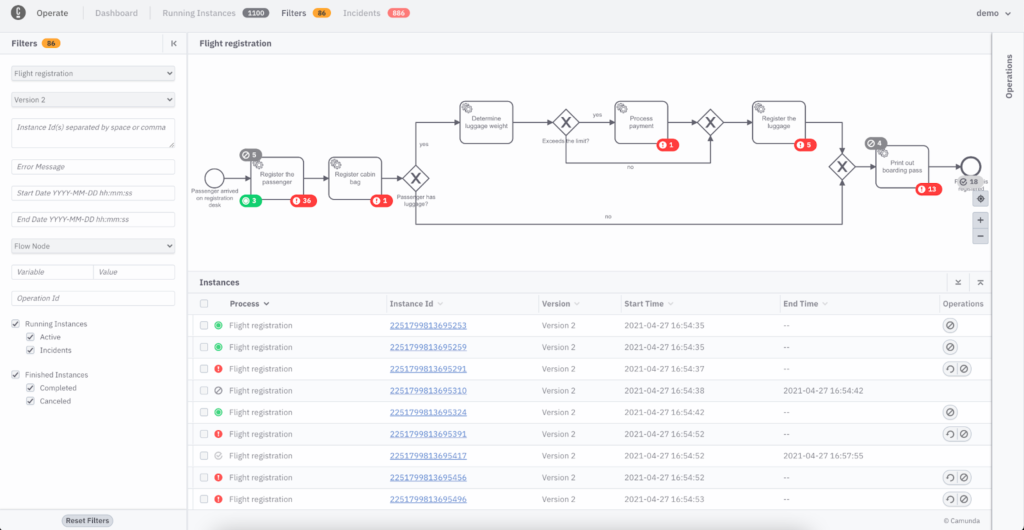
Besides just monitoring processes, Operate allows you to resolve incidents in your processes and edit variables in real-time.
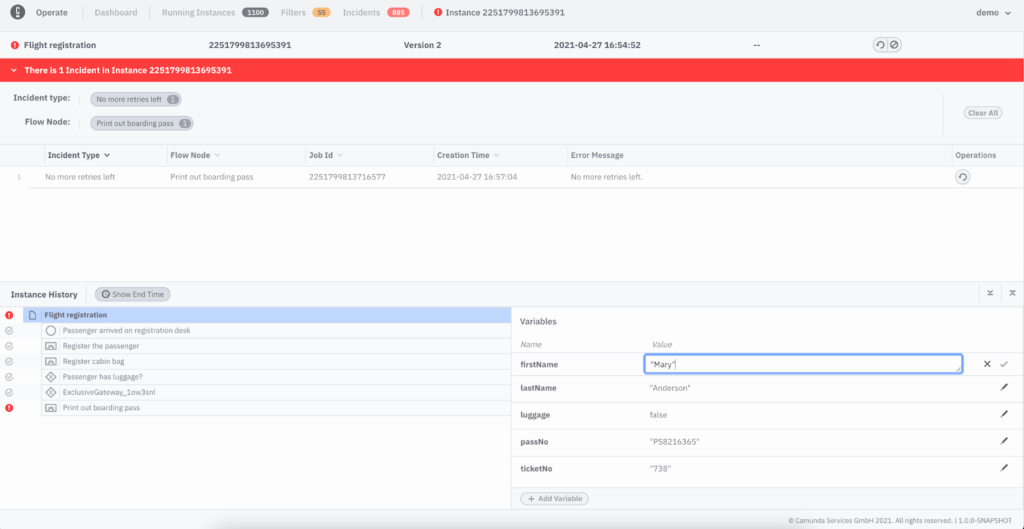
Human Workflows with Tasklist, User Tasks and Forms
With this release we are fully enabling human workflows in Camunda Cloud by introducing our new component Tasklist for Camunda Cloud, adding support for User Tasks and adding Camunda Forms to Camunda Cloud.
Tasklist
The new Tasklist component of Camunda Cloud allows users to work on User Tasks:
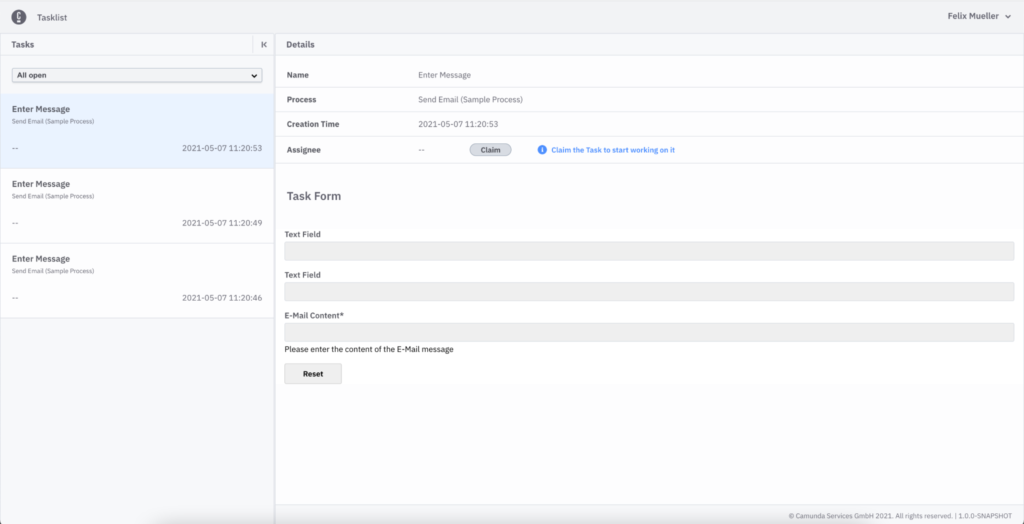
Support for User Task BPMN Symbol
Besides our new component, we’ve also added support for the User Task BPMN symbol in Camunda Cloud. This means you can design User Tasks using the Camunda Modeler or Cloud Modeler:
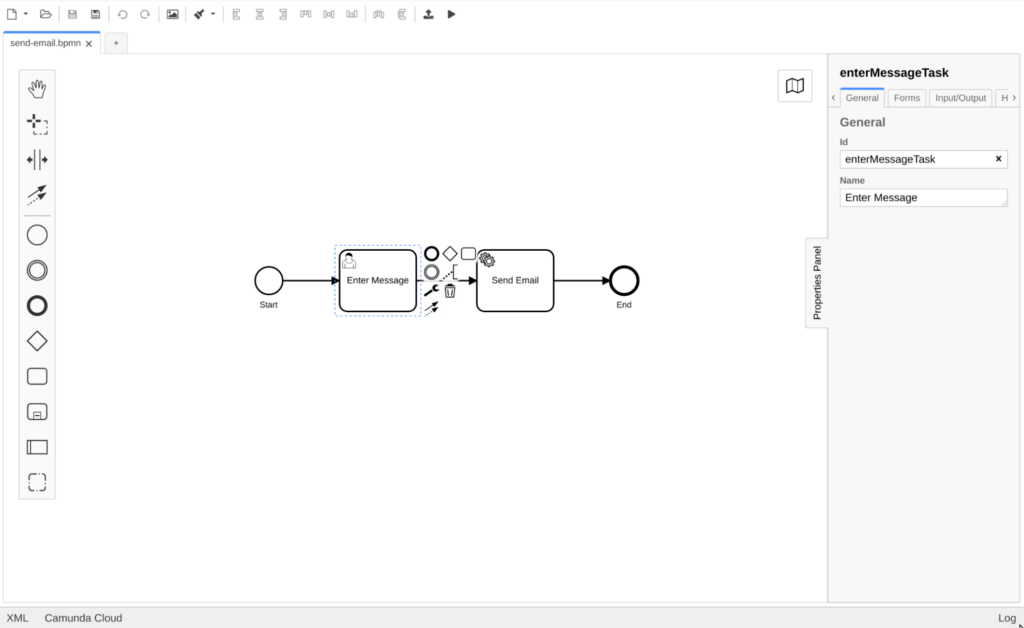
Support for Camunda Forms
We are also introducing our new Camunda Forms into Camunda Cloud. With Camunda Forms, you can easily design user task forms in the Camunda Modeler or the Cloud Modeler, connect them with your User Tasks and see the results directly in the new Tasklist:
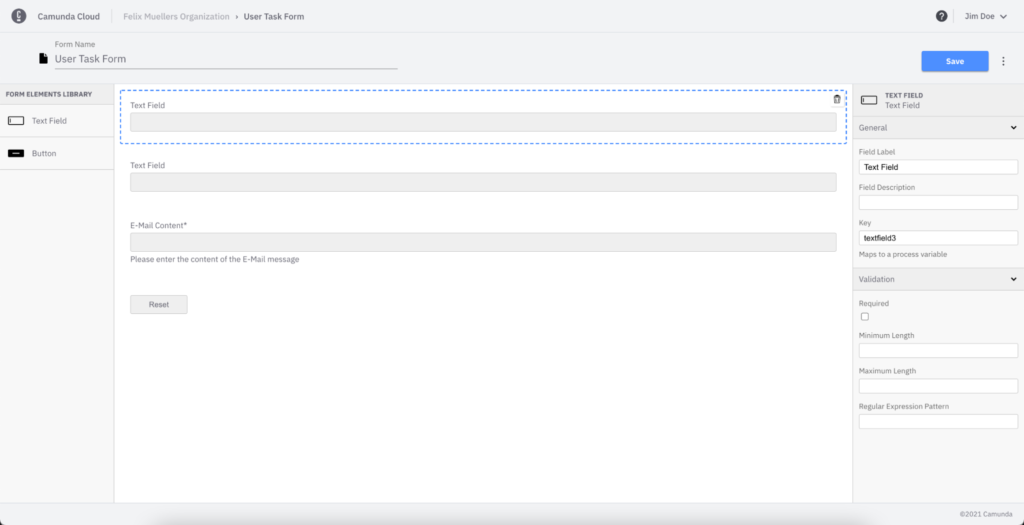
The Cloud Modeler makes it easy to navigate to and select the defined User Task Form. The JSON specification of the form will be automatically stored in the BPMN process such that it can be deployed to the Zeebe Engine afterwards:
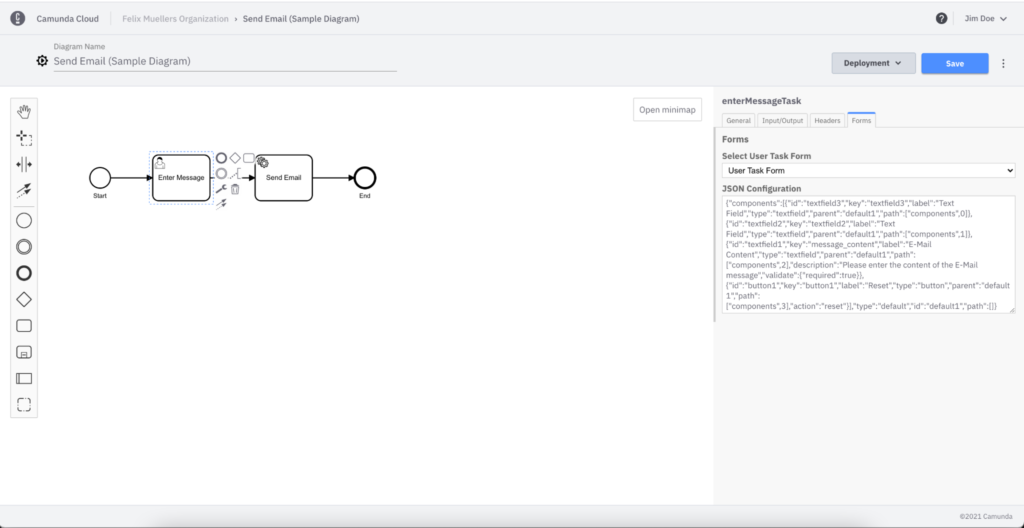
Once you have started a new instance of your process, you can directly see the defined form in the Tasklist:
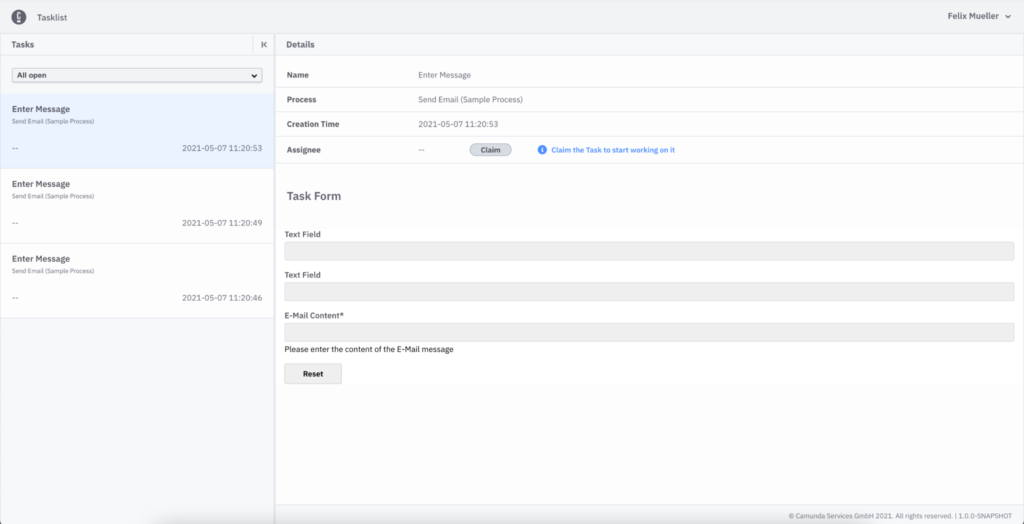
Tasklist GraphQL API
In addition to managing and working on User Tasks in Tasklist, we have also built a new approach for retrieving and working on User Tasks using a new Tasklist API. This Tasklist API is based on GraphQL and you can find details in our documentation.
This API is not yet a public API which means it is subject to change, but we invite you to give it a try and provide feedback such that we can iterate and improve before adding it to our Public APIs.
Public API
With Camund Cloud 1.0 we are introducing the concept of Public API for certain APIs.
This is a big milestone for the product since the concept of Public API means that we offer certain APIs to our users and guarantee backwards compatibility for these APIs.
The main advantage for users is that they can rely on the fact that public APIs will not change or be removed during minor version updates of the product. Subsequently users do not have to change their code when updating between minor versions of our product.
There is a list of Public APIs as well as a more detailed explanation of this in our documentation
Update to Camunda Cloud 1.0
We highly recommend updating to Camunda Cloud 1.0 as soon as possible. This will allow you to immediately make use of all our new features and components. In Camunda Cloud you can directly create a new cluster based on the latest version.
We have published an in-depth update guide which will help you make a smooth transition from 0.26 to 1.0.
You will notice that from 0.26 to 1.0 we introduced some breaking changes. Starting from this release we will make sure that your data will be migrated from one minor version to another. Additionally as outlined in the public API section, we will guarantee backwards compatibility on the API as defined in our documentation.
In case you encounter any challenges, reach out to us via our Community Forum or via Support.
License changes
With this release, we are updating our Zeebe Community License from 1.0 to version 1.1. The changes only include minor wording changes that do not have a major impact. You can find the new version here.
Try Camunda Cloud
You can sign up here for a free 30-day trial of Camunda Cloud.
We also welcome you to join our vibrant Camunda Cloud Community on forum.camunda.io.
Besides the Community Forum, there are multiple community extensions available for Camunda Cloud. The best way to find them is to check out our Community Hub on GitHub.
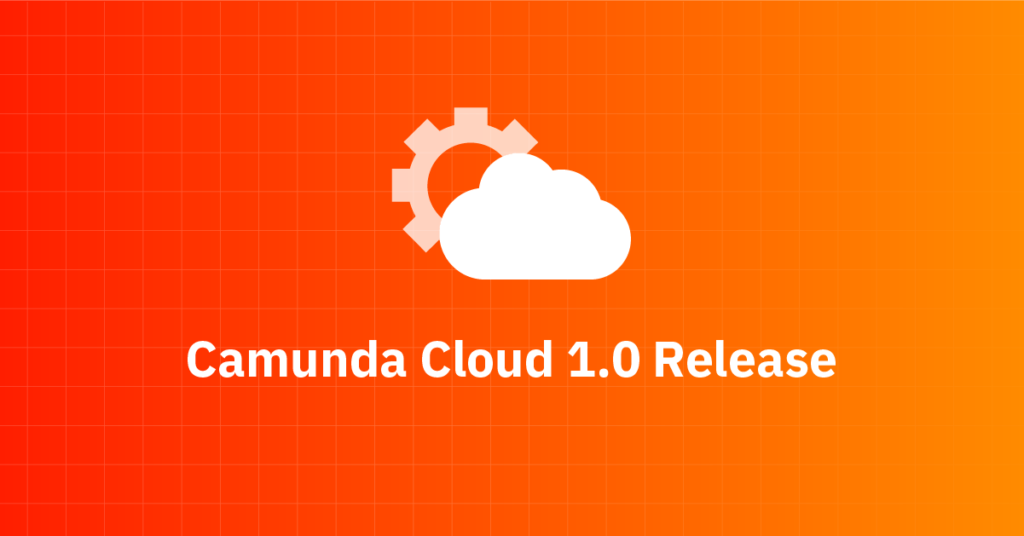

Start the discussion at forum.camunda.io